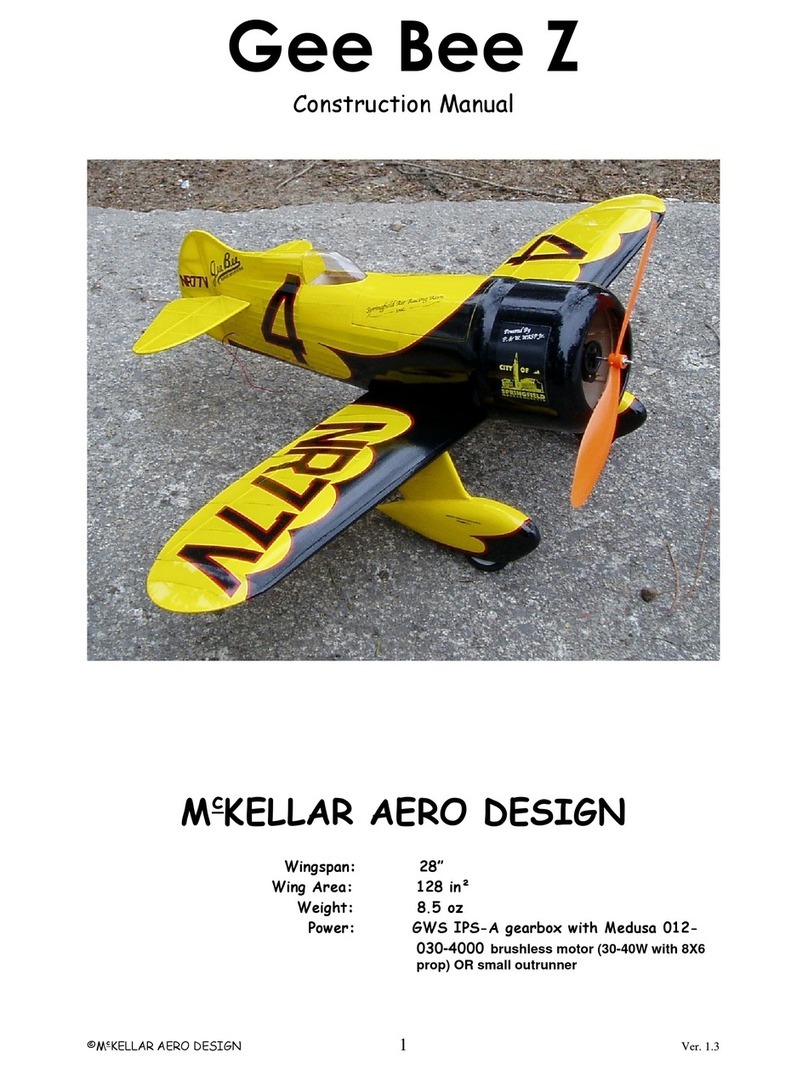
©M
c
KELLAR AERO DESIGN
3
Ver. 1.2
Required to Complete
•T o lengths of 1/8” diameter carbon fibre rod (7-11/16” and 11-9/16” long)
•One package of CA hinges
•T o pre-bent pieces of 1/16” piano ire for the aileron torque rods
•T o 12” lengths of 0.032” piano ire
•T o plastic tubes
•T o 1/8” diameter by 1/8” long rare-earth magnets
•One length of 3/32” aluminum tube
•Four 2-56 X ¼” socket head cap scre s
•T o Dubro Micro E/Z Connectors
•Covering
•Self-adhesive Velcro (can be found at most hard are stores)
•Medium and thin cyanoacralate (CA)
•10 minute epoxy
•T o micro servos eighing 8-10g ith 12-15 oz-in torque rating
•One micro receiver
•One speed control ith BEC (battery elimination circuit) suitable for your motor.
General Building Instructions
•It is best to remove the parts from the laser cut sheets only as they are needed. This
ill reduce any chance of confusion since some of the smaller parts are not labelled on
the actual part.
•Sand do n any remainders of the tabs hich held the parts in the sheet.
•Do not force any tabs into the slots. Enlarge the slots if the tabs are a bit tight. A
je ellers file or nail file orks ell for this.
•Be sure to check the fit of each part and assembly before applying glue.
•Use medium CA for all joints unless told other ise.
Building the Fin
Begin by removing Appendix A from the manual and place on building board ith ax paper
over the sheet to protect the plan. Pin V1 in place over the plan. Glue V2 to V3 and then pin V4
in place. When everything is aligned, you
can glue V4 to both V2 and V3. No fit the
remaining parts (V5, V6, V7 and V8) in
position and apply med. CA to the joints.
Once all the glue has cured, you can remove
the fin from the building board. Lightly sand
both sides so they are flat ith no lumps.
The leading edge and tip should be rounded
over ith a sanding block. Finally, the
trailing edge can be sanded to a taper ith
a thickness of roughly 1/16” at the outer
edge. Make sure this taper is even on both
sides of the fin.
Building the Wing
The first step is to lay the lo er ing skins in place on a flat surface and glue them together. The
right ing lo er skins are made from parts WR1, WR2, WR3, and WR4. The left ing lo er





























